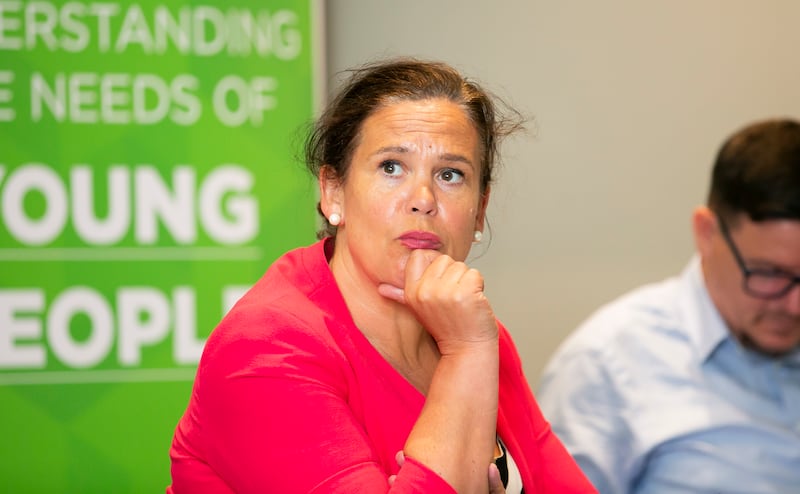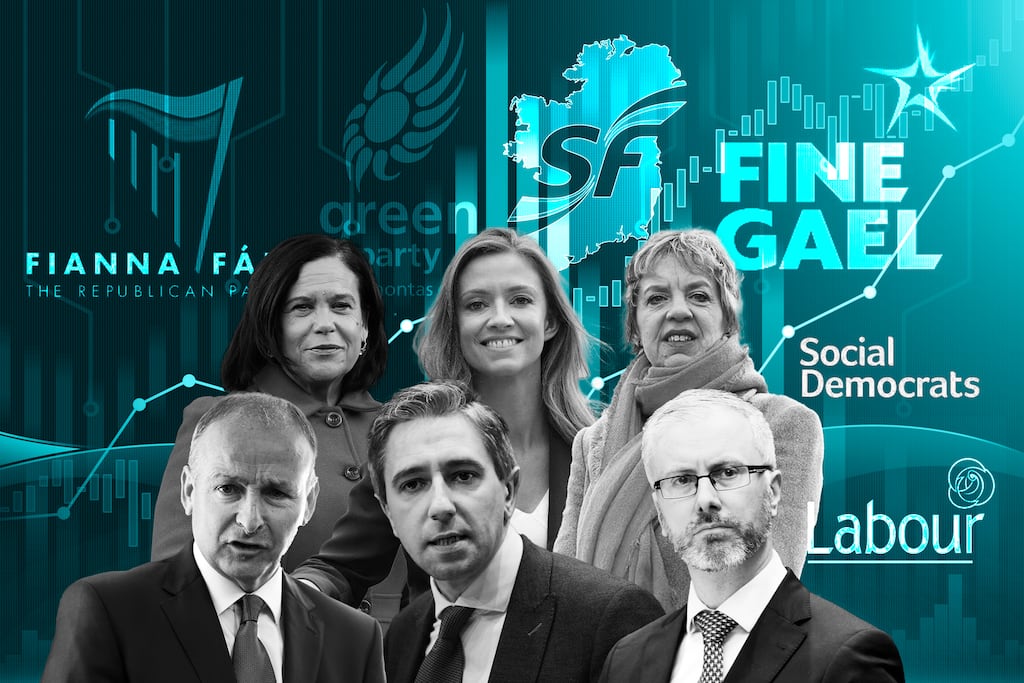At this stage, there are more theories about the timing of the general election than there are about the moon landing.
The latest rumour flying around Leinster House is that when Taoiseach Simon Harris returns from meeting US president Joe Biden at the White House in a week, he will disembark the plane and dissolve the Dáil right there on the tarmac at Dublin Airport.
Another theory is that he is planning to create a “committee of the Dáil” so TDs can whizz through the Finance Bill in one truncated process giving effect to the giveaway measures and hoped-for electoral benefits announced in last Tuesday’s Budget 2025 package.
The only theory that no one really believes is the Taoiseach’s one: that the Government will last all the way until next March.
It’s possible that Harris wants to catch everyone unawares, especially the Opposition, who seem to be getting the wind back into their sails. Strategists inside the Opposition parties have been ramping up their election planning for fear of not being ready when the whistle is blown.
In Sinn Féin, some 31 selection conventions have taken place, with more planned for the coming weeks. As with other parties, these can bring their own tensions, which must be managed.
In Sligo-Leitrim, for example, the party wanted to run two candidates, with outgoing TD Martin Kenny viewed from the outset as guaranteed to be re-elected. That left a contest between former North West MEP Chris MacManus and councillor Thomas Healy. Such contests can be uneasy. Before the local and European elections last June gave the party a fright, Sinn Féin would have been eyeing up three candidate strategies in many constituencies.
What exactly should the scale of Sinn Féin’s ambition be? That’s the question plaguing their advisers. One source tells The Irish Times the party will run candidates in every constituency, and the final number of candidates could total somewhere in the mid-60s. That’s a far cry from aiming for a thumping majority. That can change of course: candidates can be added or taken away.
Sinn Féin is still mulling a message or slogan for the general election. The theme of the 2020 general election was the need for change. Party insiders point out that the slogan of the recent ardfheis was the same as recent years: “Time for change – Am don Athrú.”
As candidates are selected, leaflets and posters are being sent to printing companies and billboards are being mocked up. Expect to see specific promises on billboards in line with Sinn Féin’s housing plan that promises a “home of your own” or the promise of a childcare system costing no more than €10 a day.
Asked to name the date when Sinn Féin believes the election will be held, a party source told The Irish Times: “Twenty-one days from today – and that’s the way it is every day. Every day we have to wake up and believe it will be 21 days from that morning. You’d be mad not to.”

To that end, political staff across the spectrum have been inundating printers across the country with requests for poster orders. Some candidates have been alarmed to hear that there may be a lead-in time of four to five weeks.
In the Labour Party, a plan has been formulated to contest more than 30 of the 43 constituencies. So far, 24 candidates have been picked, with more planned. A spokeswoman promises that the party will run “a new generation of strong Labour Dáil candidates.”
“Our candidates are canvassing on the ground and building up their teams and the poster and leaflet preparation is full steam ahead,” she says.
“Candidates have been provided with a batch of ‘Vote 1′ leaflets for use in the first few days of a snap election, and the party signed off on text and design for the main election literature this week.”
The party says “key lessons” have been learned from its solid performance in the local and European elections in June, when it won a seat in the European Parliament for Aodhán Ó Riordáin in Dublin.
“We expect an election to be called shortly and will be ready whenever it happens,” she says.
The Social Democrats say they now have most of their candidates selected, with just a few outstanding.
“We have been planning all along as if the election will be called in November, so we have posters organised and literature for candidates, and we are finalising the manifesto at the moment,” says a spokeswoman.
Aontú is planning to run a candidate in every constituency, with 32 selected so far, their canvassing teams already out knocking on doors in Co Meath – where party leader and Aontú's sole TD Peadar Tóibín is based – and beyond.
All of this work on the ground stands in stark contrast to the repeated pronouncements of Tánaiste and Fianna Fáil leader Micheál Martin, who insists that the ideal time for a general election is February. The question is: ideal for who?
Regardless, his party is setting out the organisational nuts and bolts for an election and may also been looking to internal polling, as most parties are, to formulate a strategy in different constituencies. Fianna Fáil has picked 60 candidates to date, and has only five constituency selection conventions to go.
For all the talk of Fine Gael pulling the trigger, the party is not quite election-ready yet either, although they are well ahead of the pack.
Fine Gael has only two selection conventions left and has picked 67 candidates in 41 constituencies so far. Of those, 26 are women, representing 38 per cent of all candidates chosen. Their candidates are made up of 17 sitting TDs, 11 Senators, 29 councillors and 10 non-public representatives. With so many sitting TDs retiring, and a lot of the councillor candidates being unknown at a national level, Fine Gael faces a particular challenge.
A party source says that between those 29 councillors, they have 308 years’ political experience. Expect to hear this line a few times over the coming weeks and months.
The source points towards party councillor Willie Aird, who is running in Laois:
“Forty-five years waiting for his shot at glory – Prince William to take over from King Charlie in Laois,” the party insider quips.
Fine Gael will end up running 75-80 candidates.
In the meantime, half the battle is already being fought online as the three Government parties siphon their Budget 2025 wins out to their potential voters through their social media pages.
[ Coalition parties are ‘serial wasters’ of taxpayers’ money, Sinn Féin saysOpens in new window ]
The Green Party, who had selected 32 candidates as of Thursday, are online trying to remind voters of its role in ensuring the residential zoned land tax actually goes ahead, while announcing more money for heat pumps, free transport for under-nines and next year’s “baby boost”.
Fine Gael is claiming it is putting more money in pockets. Fianna Fáil is honing in on infrastructure, education and the cost of living. Sinn Féin is attacking them all for wasting money and wanting to spend €9 million on “phone pouches” in schools.
The party election machines are cranking up.
[ The Irish Times/Ipsos B&A poll from September: the full results in chartsOpens in new window ]

















